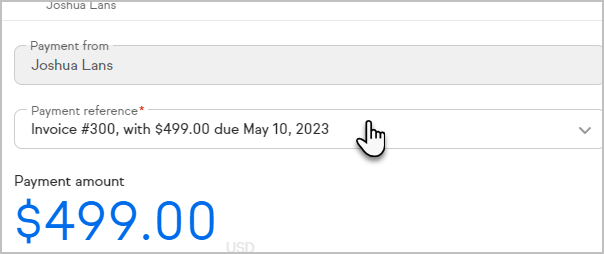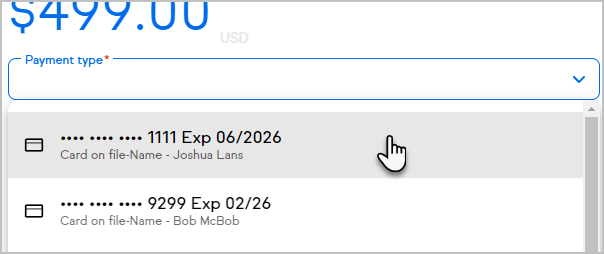You now have the ability to store and use a customer's card on file for failed payments or future purchases as long as your customer has given you permission to do so. This means you no longer have to reach out and have an awkward conversations with a customers to get their credit card details again, which may result in a poor customer experience.
If the contact has a sale in their activity history
- Start by clicking on the Sales card

- Click the plus sign at the upper right

- Select add credit card

- Complete the information in the popup. Assuming you have permission from the customer, check the box signifying you have permission to store the card

- Click the Save button to add the card on file.

Using the Card on File when adding a payment
- Open a contact
- Click on the more button

- Select 'Add Payment, Invoice or Quote'

- Select 'Add Payment'

- Select a payment reference to apply a product

- Select a product. Note that the product cannot be a zero dollar product to manually store a card on file
- Under payment type - if the card is still on file - you can select the card on file, add another credit card, or log a cash or check payment

Applying a payment to an Invoice
- Select the more option on the contact record

- Select 'Add Payment, Invoice or Quote'

- Select Add Invoice

- Create and send an invoice (or you can leave it in draft mode)
- Return to the contact record
- Click on the invoice

- Scroll to the bottom and click Add Payment

- Under payment type - if the card is still on file - you can select the card on file, add another credit card, or log a cash or check payment

FAQs
What happens if a customer does not grant permission for a card on file?
The card will not show up on the customers account for you to use if the explicit permission isn't granted
What do users need to do to add a payment with a card on file?
Follow the click steps above
When is a card stored on file in a Keap application?
- When a customer purchases a recurring subscription product, permission is implied and the card is stored on file for recurring use.
- When a customer purchases with a split payment, permission is implied and the card is stored on the file for recurring use.
- When a user takes a manual payment from a customer, consent is implied however the user must check the box that they have permission to store the card on file.
- If a customer purchases a product online and checks the box giving permission to store the card for future purchases, the card will be stored on file
Note, if permission is not given, the payment can still go through, the checkbox would remain unchecked, and the customers card would not be stored on file for the user to use for future purchases.













